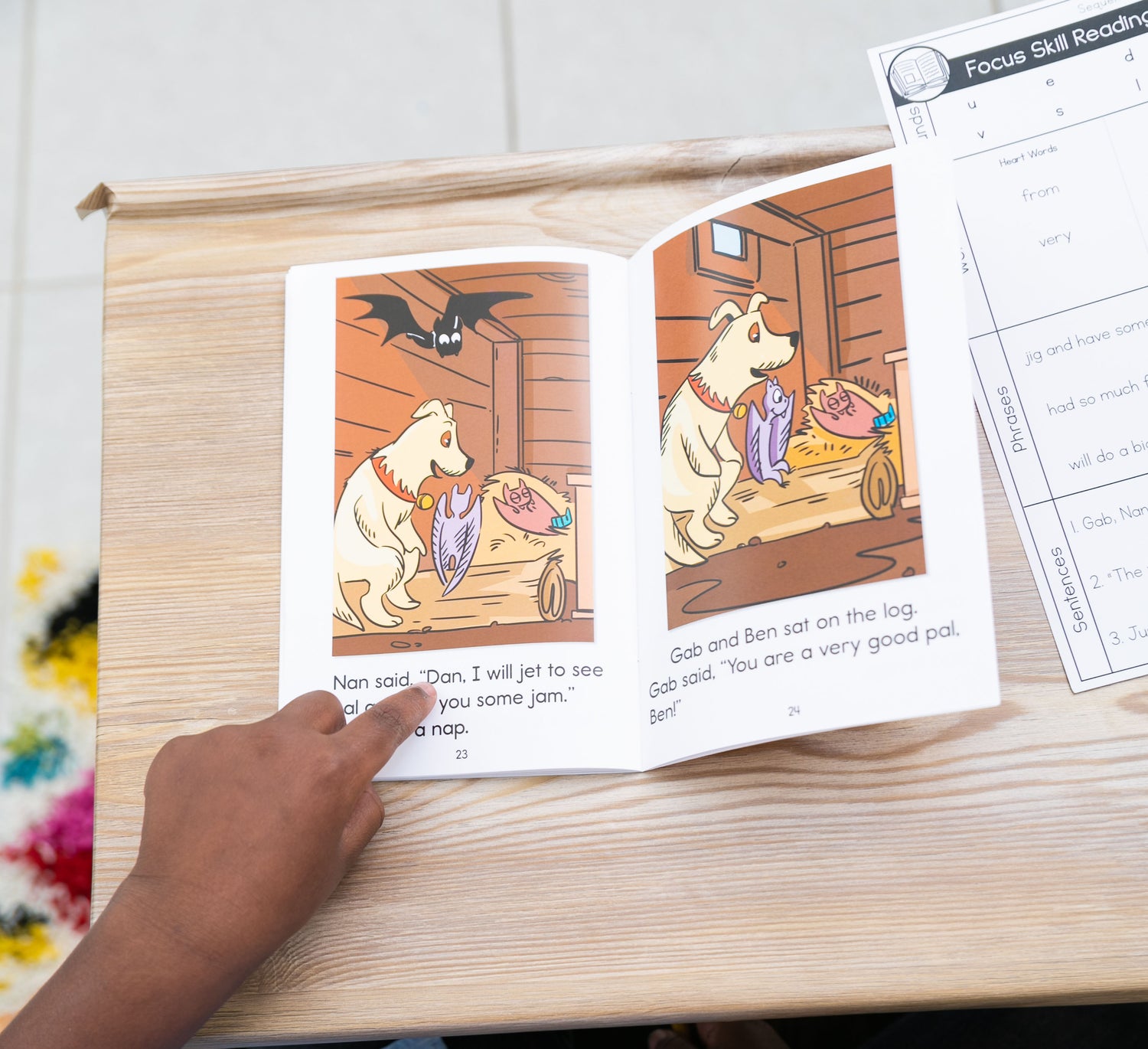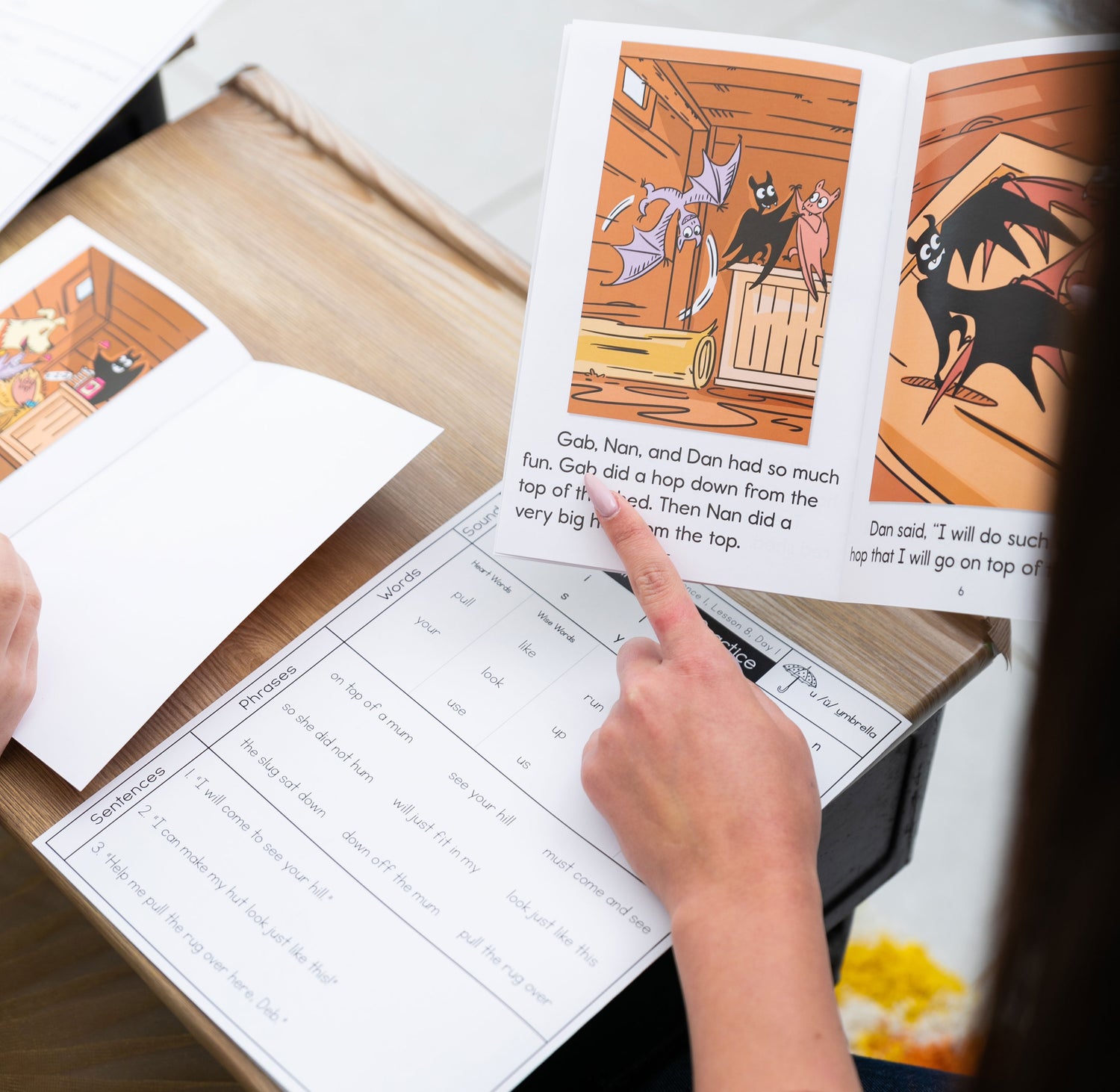Check out our BRAND NEW Developing Decoders Decodable Books - 100% UFLI Aligned
These UFLI Aligned Decodable Books are completely aligned to UFLI's Scope & Sequence and provide two books per skill to cover the 128 UFLI lessons!
SHIPPING NOW! Arrives within 3-5 business days!
-
Developing Decoders Complete Collection (1320 Books + 12 Anthologies - Green Set)
Regular price $4,988.00 USDRegular priceUnit price per$6,650.00 USDSale price $4,988.00 USDSale -
Kindergarten Developing Decoders Collection (540 Books + 12 Anthologies - Green Set)
Regular price $2,070.00 USDRegular priceUnit price per$2,760.00 USDSale price $2,070.00 USDSale -
1st Grade Developing Decoders Collection (1092 Books - Green Set)
Regular price $4,095.00 USDRegular priceUnit price per$5,460.00 USDSale price $4,095.00 USDSale -
2nd Grade Developing Decoders Collection (1020 Books - Green Set)
Regular price $3,825.00 USDRegular priceUnit price per$5,100.00 USDSale price $3,825.00 USDSale
Structured Literacy
-
Structured Literacy with E.A.S.E | Complete Kit
Regular price $2,849.00 USDRegular priceUnit price per$5,699.00 USDSale price $2,849.00 USDSale -
Structured Literacy with E.A.S.E | K-1 Kit
Regular price $2,499.00 USDRegular priceUnit price per$4,999.00 USDSale price $2,499.00 USDSale -
Structured Literacy with E.A.S.E | 2-4 Kit
Regular price $2,722.00 USDRegular priceUnit price per$5,445.00 USDSale price $2,722.00 USDSale
Decodable Books (Gray Set)
This Gray Set of Decodable Books follow a different scope and sequence than our Green Set.
Please refer to the scope & sequence within the product to see the progression of skills in this collection.
-
Decodable Readers Classroom Collection (Gray Set)
Regular price $4,366.50 USDRegular priceUnit price per$5,822.00 USDSale price $4,366.50 USDSale
Classroom Tools
-
[BUNDLE] Word Mapping - Map-Its Paddles (SET OF 5 Kits)
Regular price $212.50 USDRegular priceUnit price per$250.00 USDSale price $212.50 USDSale -
[BUNDLE] Magnetic Letters Kit with Demonstration Magnetic Boards for Small Group Instruction (6 Magnetic Letter Kits)
Regular price $179.99 USDRegular priceUnit price per$239.99 USDSale price $179.99 USDSale
Developing Decoders
The comprehensive phonics curriculum in Structured Literacy with E.A.S.E. uses phonological and phonemic strategies to help young readers explicitly and systematically decode words, a practice that the research has long supported as an effective tool for reading instruction.
Our goal is to provide students with the tools and strategies to decode and encode words that make up the English language so they can become skilled readers.
USE DECODABLE TEXTS TO PROVIDE OPPORTUNITIES FOR THE PRACTICE AND IMPROVEMENT OF DECODING SKILLS AT EARLY LEVELS. Research continues to support the use and benefits of decodable books in early reading instruction for young learners. (Castles et al., 2016).

Decodable Texts
A study examining the effects of reading decodable texts among at-risk early readers in a tutoring program found significant improvements in decoding, word and passage reading, and comprehension when compared to a control group. First graders were randomly assigned to two intervention groups, differing by the level of decoding, and a control group. The findings showed that while the intervention groups outperformed the control group, there was no difference in post-test scores between the two intervention groups. This suggests that the use of decodable texts positively contributes to reading development among children who may be struggling with reading (Jenkins et al., 2004).

Price-Mohr and Mohr (2020) investigated the effects of phonically-decodable texts on young children learning to read. The young readers were randomly assigned to groups using either high or low proportions of phonically-decodable words. Both groups were introduced to new vocabulary through associated groups prior to reading the books. The findings revealed that the proportion of phonically decodable words made a difference in reading comprehension. Children in the intervention group using lower proportions of decodable words outperformed the group using higher proportions of decodable words on comprehension outcomes, supporting previous studies suggesting that as children become more skillful readers, decodable texts are less effective.













![[BUNDLE] Word Mapping - Map-Its Paddles (SET OF 5 Kits)](http://www.developingdecoders.com/cdn/shop/files/map-it-paddles-1.jpg?v=1695765966&width=533)
![[BUNDLE] Magnetic Letters Kit with Demonstration Magnetic Boards for Small Group Instruction (6 Magnetic Letter Kits)](http://www.developingdecoders.com/cdn/shop/files/magneticletterskitimage_f7e7270a-4488-4998-9929-bd39751507b8.jpg?v=1689723015&width=533)